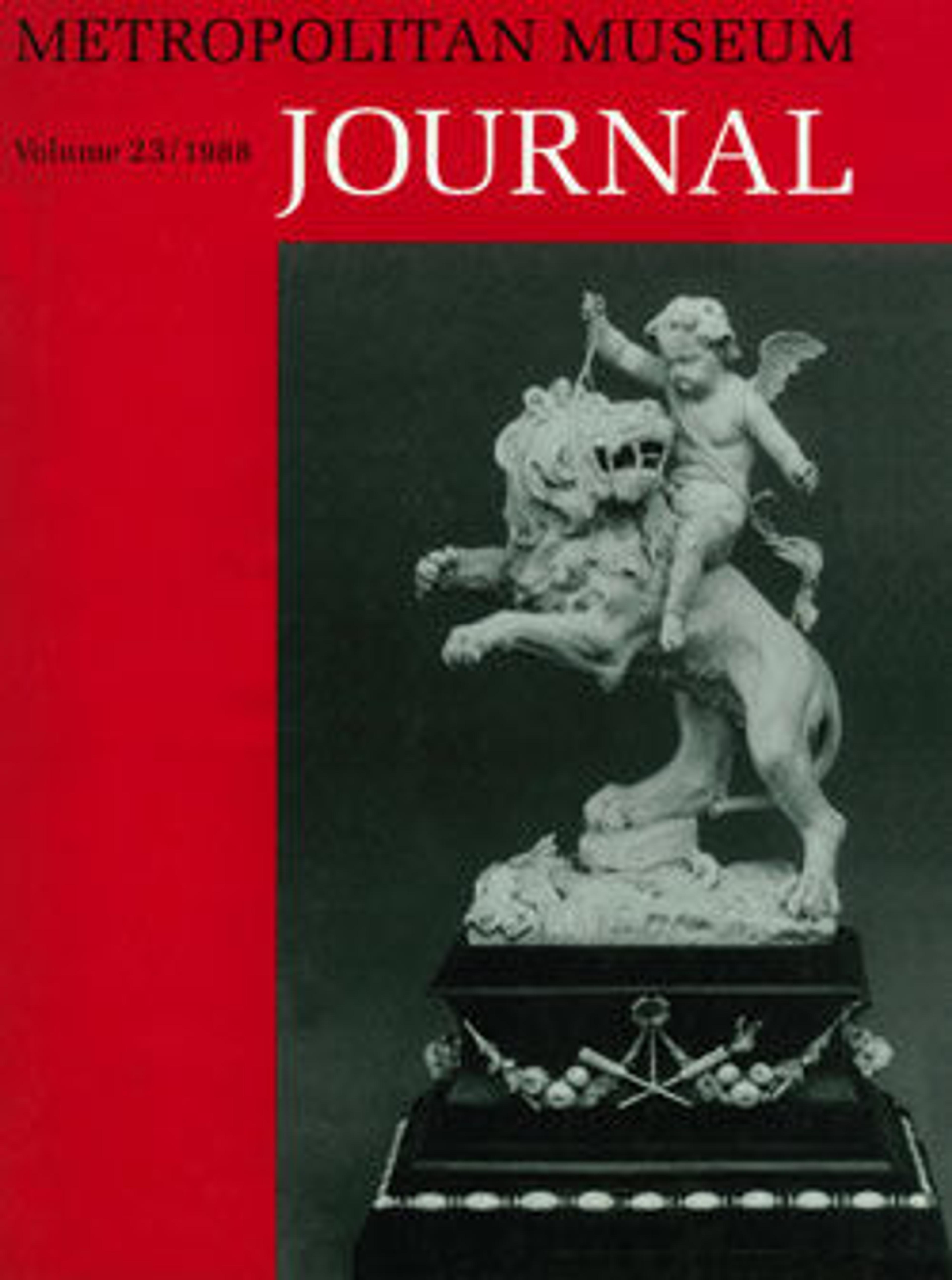Tobacco box
The box is oblong with rounded ends. On the lid Charlemagne is depicted, conversing with a monk and surrounded by children against an architectural background. Scrolls and trelliswork decoration flank the scene. Inscribed at the upper right side of the scene, on a mock signboard is: APC. Inscribed at the left end is: Karel de Groote (Charlemagne) and at the right side: In den jare 1746 (In the year 1746).
On the underside, within a wavy-line border, is the inscription: De groote keizer van wiens werk de vrucht blijft leven,/Die veel voor’t heil sijns volks, veel voor beschaving deed, / Zag voor sijn helden staal niet slechts de vijand beven/Neen 't onderwijs dat hij der teedre jeugd deed geven / Was 't wapen waar hij steeds de domheid mee bestreed (The great emperor, the fruit of whose work still lives,/Who did much for the welfare of his nation, and much for civilization/Saw the enemy tremble not only for his herds steel/No, the education that he provided for tender youth/Was the weapon with which he always fought stupidity.) Charles the Great (742?- 814), who was emperor of the West and king of the Franks, built a residence, De Valkhof, in Nijmegen in 777. Some remains of it still exist.
The front side of the box has leaf scrolls and the back side shows a leaf composition. This is the only box in the collection with chased decoration.
On the underside, within a wavy-line border, is the inscription: De groote keizer van wiens werk de vrucht blijft leven,/Die veel voor’t heil sijns volks, veel voor beschaving deed, / Zag voor sijn helden staal niet slechts de vijand beven/Neen 't onderwijs dat hij der teedre jeugd deed geven / Was 't wapen waar hij steeds de domheid mee bestreed (The great emperor, the fruit of whose work still lives,/Who did much for the welfare of his nation, and much for civilization/Saw the enemy tremble not only for his herds steel/No, the education that he provided for tender youth/Was the weapon with which he always fought stupidity.) Charles the Great (742?- 814), who was emperor of the West and king of the Franks, built a residence, De Valkhof, in Nijmegen in 777. Some remains of it still exist.
The front side of the box has leaf scrolls and the back side shows a leaf composition. This is the only box in the collection with chased decoration.
Artwork Details
- Title:Tobacco box
- Date:1746
- Culture:Dutch
- Medium:Brass, copper
- Dimensions:1 1/4 x 5 5/8 x 1 7/8 in. (3.2 x 14.3 x 4.8 cm)
- Classification:Metalwork-Brass
- Credit Line:Gift of C. Gustave Mourraille, in memory of his sister, Miss M. Mathilde Mourraille, 1957
- Object Number:57.108.23
- Curatorial Department: European Sculpture and Decorative Arts
More Artwork
Research Resources
The Met provides unparalleled resources for research and welcomes an international community of students and scholars. The Met's Open Access API is where creators and researchers can connect to the The Met collection. Open Access data and public domain images are available for unrestricted commercial and noncommercial use without permission or fee.
To request images under copyright and other restrictions, please use this Image Request form.
Feedback
We continue to research and examine historical and cultural context for objects in The Met collection. If you have comments or questions about this object record, please contact us using the form below. The Museum looks forward to receiving your comments.
